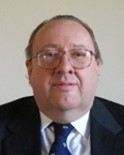
| Version | Summary | Created by | Modification | Content Size | Created at | Operation |
|---|---|---|---|---|---|---|
| 1 | Rui Fausto | -- | 593 | 2022-10-14 05:19:25 | | | |
| 2 | Rui Fausto | Meta information modification | 657 | 2022-10-14 09:47:36 | | |
Video Upload Options
1. Brief Introduction
Austin James Barnes was born in Blackpool on 2 June 1945. He went to Gonville and Caius College, Cambridge, in 1963 and obtained his BA degree in 1966. He then moved to the University College of Swansea, where he was awarded his PhD degree in 1969 for research on the infrared spectra of matrix-isolated species under the supervision of the late Harry Hallam. After a period of postdoctoral research in Swansea, he was appointed as a lecturer at the University of Salford in 1973, where he remained for the rest of his career. He was awarded a DSc degree by the University of Wales in 1986, and in 1991 was promoted to Reader at Salford. From 1996 to 1999, he served as Head of the Department of Chemistry and Applied Chemistry. He continued to teach on a part-time basis until 2005. He had a continued association with the University as an Honorary Visiting Professor until the end of 2015. Following on from his PhD work, Austin's principal research interests focused on infrared and Raman matrix isolation spectroscopy, particularly applied to the investigation of molecular interactions and conformational isomerism.
2. Notable Contributions
Notable early work included the first reported use of a Fourier transform spectrometer to obtain the far infrared spectra of molecules trapped in matrices, a critical review of the interpretation and prediction of matrix effects, and a study of experimental conditions for obtaining Raman spectra from matrices. Investigations of the conformational behavior of molecules trapped in matrices led to a proposed empirical relationship referred to by some authors as ‘the Barnes relation’. Austin's interests in strongly hydrogen-bonded systems have also extended to structural studies of ferroelectric crystals and nonlinear optical materials. He was one of the authors of an early report on so-called ‘blue-shifting’ hydrogen bonds and published a short review summarizing our knowledge of this phenomenon.
Austin published about 125 research and review papers and edited many books and volumes of conference proceedings. He was awarded the Gold Medal of the University of Wroclaw, Poland, in 2008. From 1979 to 1993, he served as Assistant Editor to the late W. J. Orville-Thomas for both the Journal of Molecular Structure and the Journal of Molecular Structure (THEOCHEM). In January 1994, he was appointed Editor of the Journal of Molecular Structure and continued in this role until the end of 2009, during which period more than 300 volumes were published. A Special Issue of the Journal in his honor was published in 2010, and a special commemorative issue of Molecules celebrating his 75th birthday appeared earlier this year. He served as President of the International Committee of the European Congress on Molecular Spectroscopy (EUCMOS) during the period 1994–2016.
3. Implications for Sciences, Humanities
Austin was one of the most influential scientists in the fields of molecular structure and molecular spectroscopy, and his long scientific career has been an example to follow. He was also an exceptional human being, and his many friends will recall with a great deal of pleasure his most agreeable companionship at the various convivial gatherings which took place at the many conferences he organized or took part in. Austin was a regular attendee at the biennial EUCMOS conferences and, throughout the years, he made the long treks from the University of Salford to the site of each Conference by automobile with the back of the car loaded down with Journal issues, abstracts and manuscripts to be reviewed.
Austin Barnes passed away in Bolton on 25 June 2021. He is survived by his children Siobhan, Fiona, Patrick, David and Robert, nine grandchildren and two great grandchildren. His wife Mary predeceased him in 2008.

Location: Blackpool




